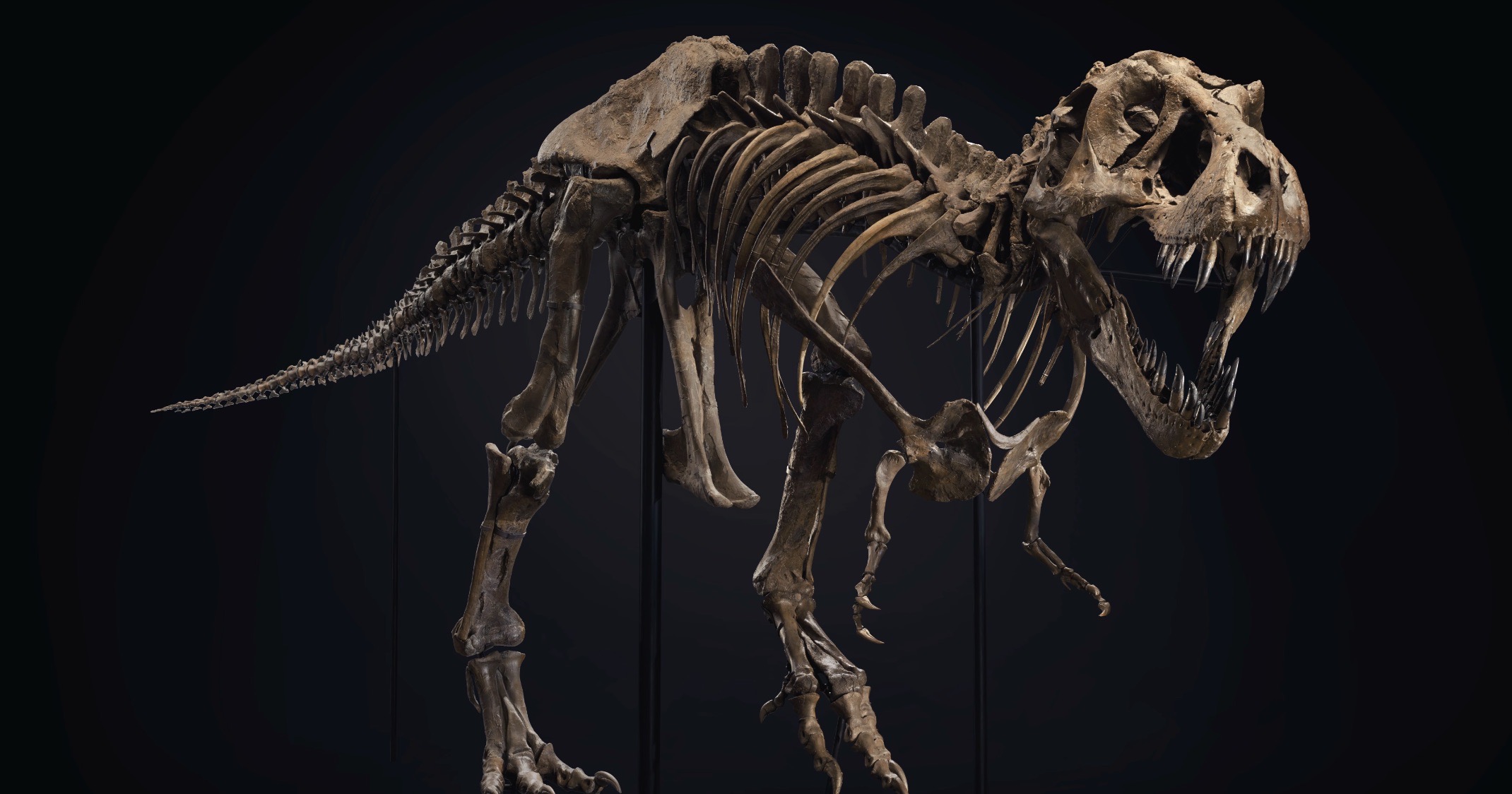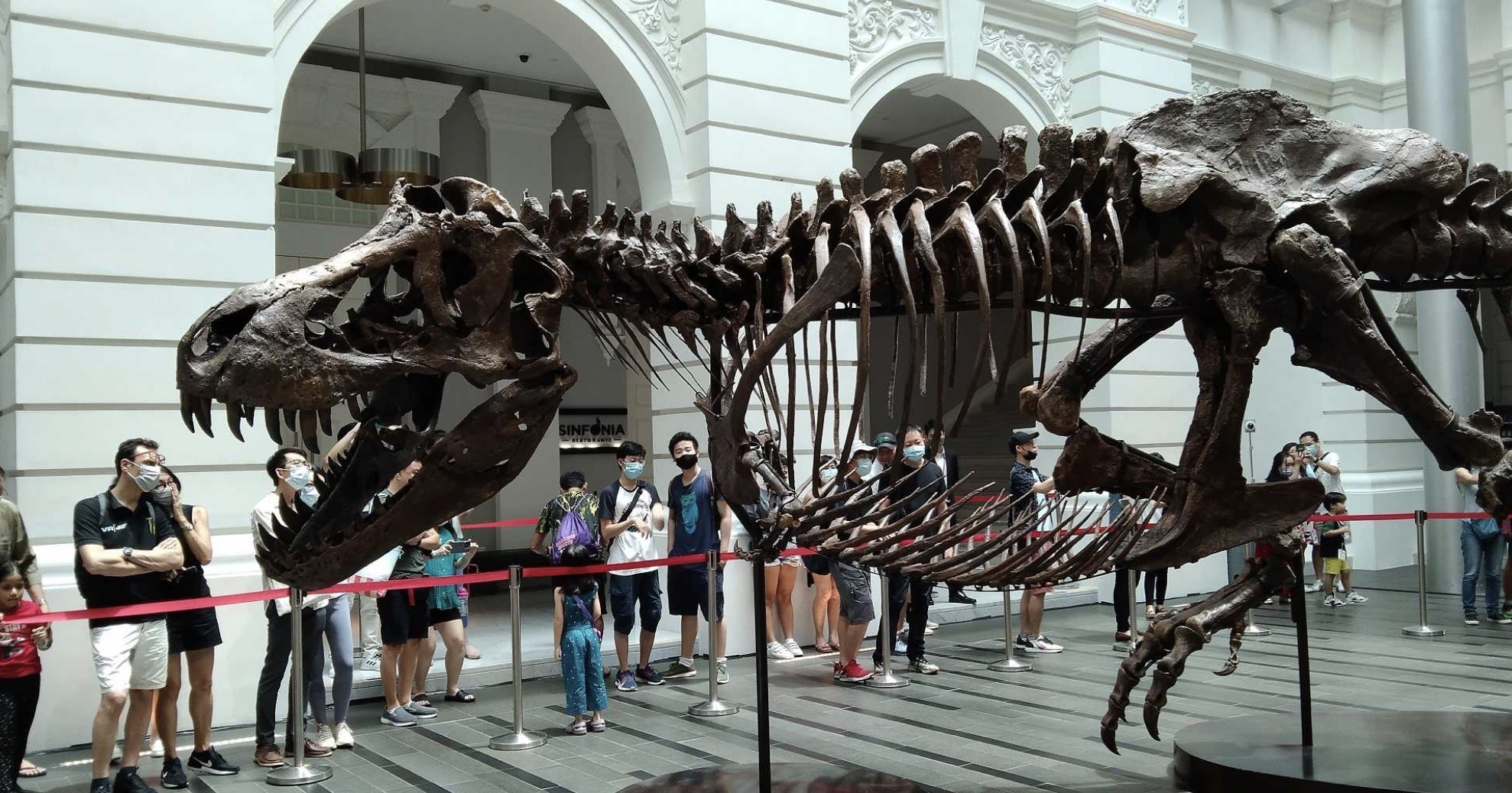Follow us on Telegram for the latest updates: https://t.me/mothershipsg
A rare fossilised Tyrannosaurus rex skeleton, nicknamed "Shen the T-rex", has been withdrawn from Christie's upcoming autumn auctions week event in Hong Kong.
The skeleton was previously on display at the Victoria Theatre & Concert Hall in Singapore from Oct. 28 to 30.
It drew a healthy crowd of visitors whilst on show.
It was supposed to be put on auction at the Hong Kong Convention and Exhibition Centre on Nov. 30, and was estimated to fetch between US$15 million and US$25 million.
Withdrawn from auction
However, just 10 days before the skeleton was supposed to go under the hammer, it was reportedly withdrawn by Christie's, after doubts were raised about the number of replica bones used in the specimen that could potentially jeopardise its authenticity.
“After consultation with the consignor of the Tyrannosaurus rex scheduled for sale on Nov. 30 in Hong Kong, Christie’s has decided to withdraw the lot,” a spokesman for Christie’s, Edward Lewine, said in a statement.
“The consignor has now decided to loan the specimen to a museum for public display.”
Why was it withdrawn
It is rare that a complete T-Rex skeleton is ever found.
The closest specimen of a complete skeleton excavated was a T-Rex skeleton named Sue.
It is currently housed in the Field Museum in Chicago.
It has 250 bones of the approximately 380 bones in a T-Rex skeleton.
Bones on Shen too similar to another skeleton
Christie's had claimed that 80 of the bones in Shen -- which means "God" in Chinese -- were original.
However, a lawyer for the Black Hills Institute of Geological Research, reached out to Christie's about the similarities between Shen and another T-Rex skeleton named Stan, which Christie's had sold in 2020 for US$31.8 million.
Black Hills Institute still retained intellectual property rights on Stan's specimen, allowing them to continue selling casts of the skeleton.
 Photo of Stan's skeleton via Black Hills Institute of Geological Research
Photo of Stan's skeleton via Black Hills Institute of Geological Research
On their website, it is stated that Stan's skull sustained unique injuries, including irregular openings at the cheeks and lower jaw, as well as a portion of bone missing at the back of his skull.
These unique features were also present on Shen's skull.
Peter Larson, the company’s president, said in an interview that when he first saw a photo of Shen, he had noticed the irregularities and suspected that the original owner of Shen's skeleton — who was not identified by Christie’s — had bought a cast of Stan from Black Hills to supplement the original bones.
“They’re using Stan to sell a dinosaur that’s not Stan,” Larson said in an interview with The New York Times.
“It’s very misleading.”
He applauded Christie's for "doing the right thing" by removing the skeleton from the auction.
Clarified authenticity
After a lawyer for Larson’s company contacted Christie’s explaining the need to clarify to the public that Shen's specimen included casts of Stan, the auction house added additional information to its online auction materials.
“Replica bones that were added to original bones were created by, and purchased from, Black Hills Institute of Geological Research, Inc.,” they added to the bottom of a web page advertising the specimen.
Christie's spokesperson Edward Lewine told NYT that Christie's believes Shen "would benefit from further study".
Auctions of dinosaur skeletons have drawn criticism from palaeontologist at museums and universities who fear that scientifically important specimens could end up privately owned and out of the reach of researchers.
Top Photo via Goo Chee Eng on Twitter
If you like what you read, follow us on Facebook, Instagram, Twitter and Telegram to get the latest updates.
